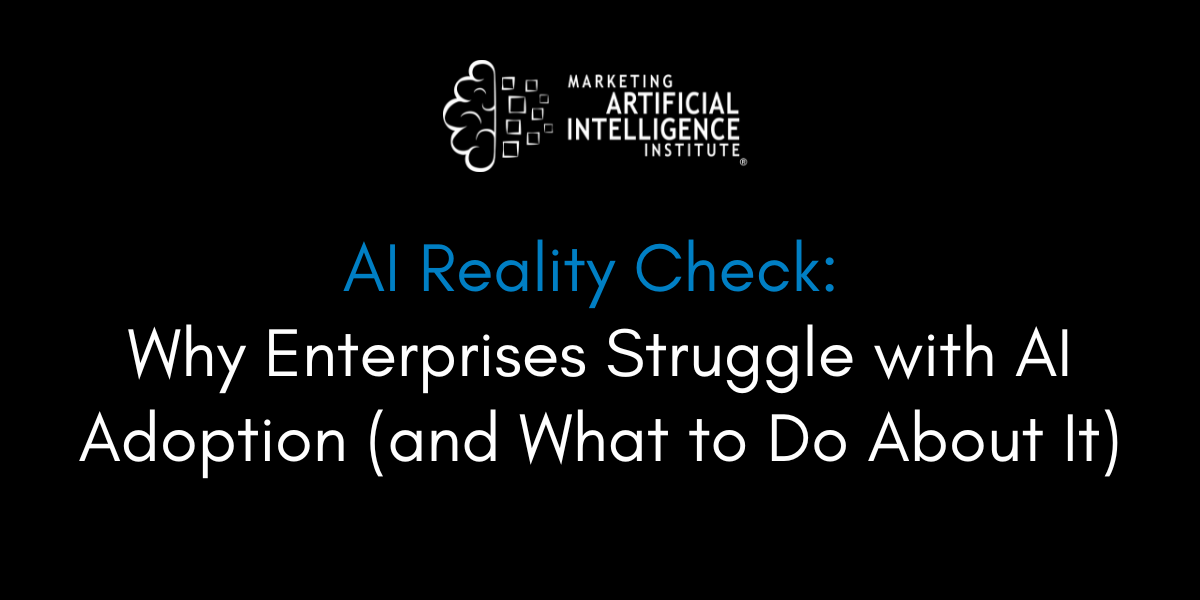A recent conversation between The Information and Chevron's Chief Information Officer Bill Braun has shed light on a surprising AI reality:
Despite significant investment in AI, the oil giant isn't yet sold on the technology.
Chevron created an enterprise AI team last summer to identify valuable AI applications. They’re still looking, according to Braun.
Chevron has about 20,000 employees testing Microsoft Copilot and has experimented with an internal chatbot to help find company knowledge across departments. But, Braun told The Information, he doesn’t know if these tools are helpful enough to justify their cost.
He went on to say:
“We’re a little dissatisfied with our ability to know how [well] it’s working. We have to survey [employees] a lot, which isn't our favorite thing to do, but we're giving Microsoft a lot of feedback…and they're trying to help figure it out because they know they need to.”
Is AI for the enterprise overhyped? Or is Chevron doing it wrong?
I got the answers from Marketing AI Institute founder and CEO Paul Roetzer on Episode 106 of The Artificial Intelligence Show podcast.
The real problem: Education, training, and planning
Roetzer potentially sees a larger issue at play here.
“If a company can’t justify $30 for Copilot (or ChatGPT, Gemini or Claude), then it is more likely due to a lack of education, training and planning, than it is to a deficiency in the AI’s capabilities,” he wrote in a related post on LinkedIn.
During our conversation, he expanded on that idea.
“What we see time and time again is companies buy the licenses (and it’s not unheard of that it’s thousands of licenses), and they just assume people are going to figure this out and find the value themselves.”
This is a core challenge businesses of every size face:
A significant amount of education, training, and strategic planning is needed to actually get value out of AI tools. You can’t just “turn it on.”
It’s unclear if Chevron does or doesn’t have robust education and training. But, many companies don’t. So it’s very possible the lack of ROI here is due to needing much more training on the technology—not a deficiency in the technology itself.
5 steps to maximize AI value in your company
So, what can enterprises (and everyone else) do to ensure they're actually getting value from their AI investments?
Roetzer outlines a framework for businesses of any size to effectively implement AI:
- Pilot with small groups: Start with select departments over a 90-day period. Prove the value and create internal user champions before scaling.
- Prioritize use cases: Focus on 3-5 use cases for each employee that will have an immediate and measurable impact on their specific role and responsibilities.
- Provide education and training: Tailor learning journeys for individuals, including specific coursework and experiences in the core platforms.
- Monitor utilization: Find ways to track whether employees are actually using the technology, and invest in those who are experimenting and finding value.
- Report performance benchmarks: Create task lists for key use cases, estimate current time spent, and assess changes at 30, 60, and 90 days based on AI utilization.
"Have a plan," Roetzer emphasizes. "The value is absolutely there if it's rolled out in a strategic way and as part of a larger change management plan, not a technology solution we just bought and we gave to everybody."
The importance of AI literacy
If you don’t currently have adequate AI education at your company, it’s OK. You are not alone. And you are not behind. The vast majority of companies of every size struggle with this.
Recent research from Marketing AI Institute underscores how acute the problem is. In it, a survey of nearly 1,800 marketing and business leaders found that:
- 75% of respondents say their employers do not have internal AI-focused education and training
- 67% cite lack of education and training as the top barrier to AI adoption in their organization
"Education and training has been the number one barrier people identify for four straight years [in our research]," Roetzer notes.
For businesses looking to accelerate their AI education and adoption, Roetzer recommends three key resources from Marketing AI Institute:
- Intro to AI: A free monthly 30-minute class on Zoom that teaches you the fundamentals of AI, followed by 30 minutes of Q&A.
- Piloting AI: 18 on-demand courses providing a step-by-step learning path for professionals at all levels on how to pilot AI in their company and career.
- Scaling AI: 10 on-demand courses for business leaders on how to go beyond piloting AI and scale the of the technology organization-wide by doing things like building an AI academy, developing an AI council, creating generative AI policies, and more.
Mike Kaput
As Chief Content Officer, Mike Kaput uses content marketing, marketing strategy, and marketing technology to grow and scale traffic, leads, and revenue for Marketing AI Institute. Mike is the co-author of Marketing Artificial Intelligence: AI, Marketing and the Future of Business (Matt Holt Books, 2022). See Mike's full bio.



